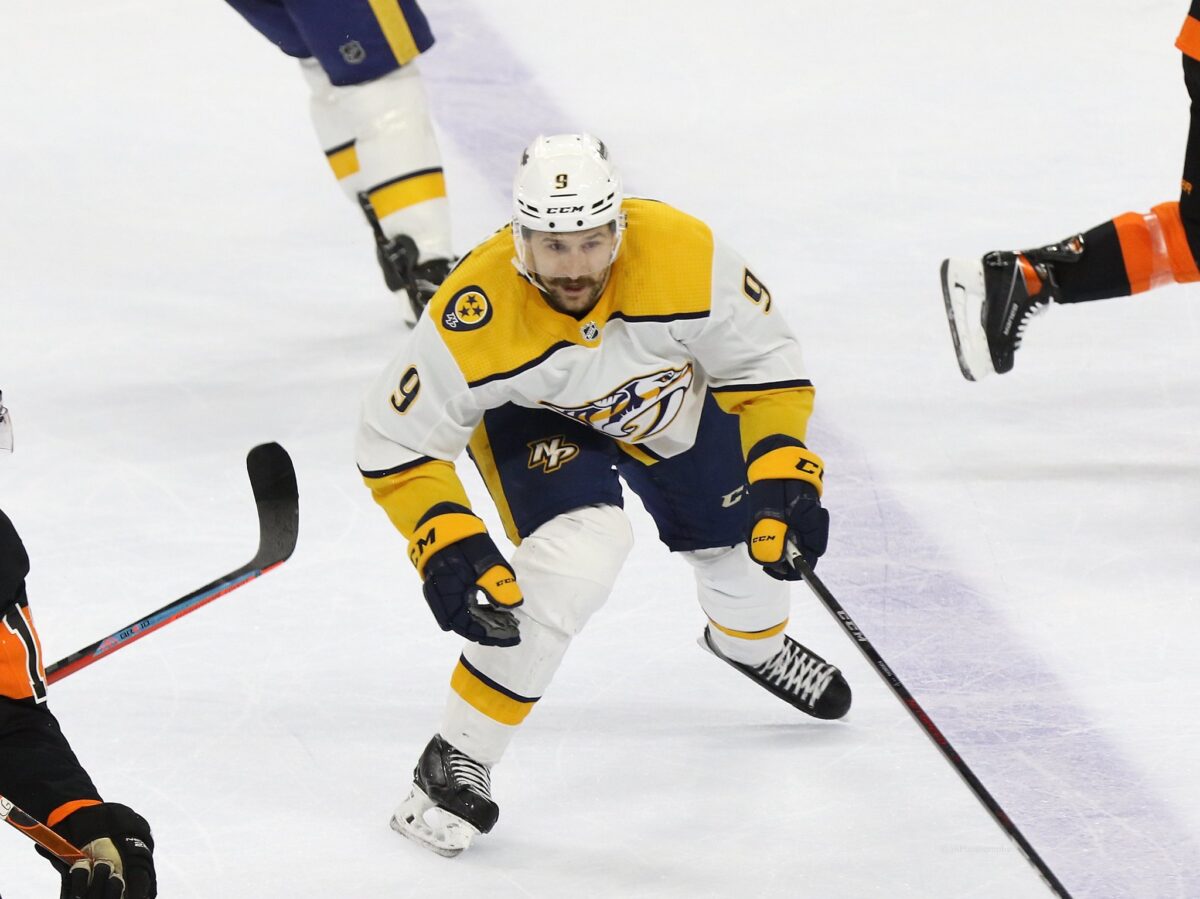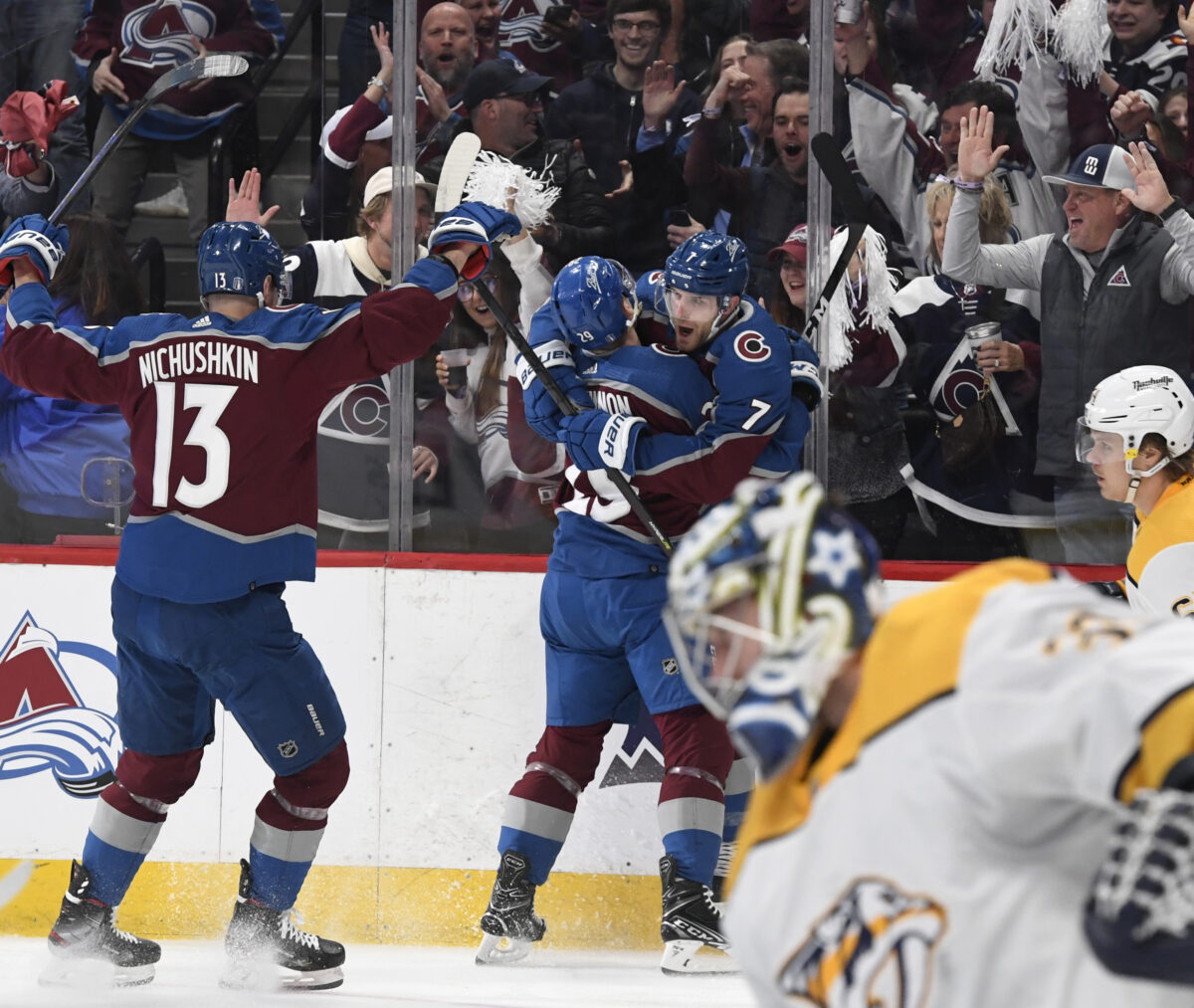The Nashville Predators came into Game 3 with high expectations after keeping the previous game close. Predators goaltender Connor Ingram was brilliant in his first start, leading to head coach John Hynes returning with the 25-year-old netminder. The two teams clashed, and midway into the game, it appeared to be another close affair after a Roman Josi point shot tied the game up at three. Unfortunately, two quick goals in 39 seconds put the Avalanche up 5-3, and they never looked back.
Related: 3 Takeaways From the Avalanche’s 7-3 Victory Over Predators in Game 3
Goals from Gabriel Landeskog and Nazem Kadri helped the Avalanche feel more secure, carrying a two-goal lead into the third period. They would hold on to it, adding two more, including an empty-net goal to devastate the Nashville crowd. With the loss, Nashville becomes the only team in this year’s first round to go down three games to none, and, for the first time in their history. The Predators are still awaiting goals from 42-goal scorer Filip Forsberg and Ryan Johansen, who had a bounceback year.
The Predators could potentially play their final game of the playoffs on May 9, as the Avalanche appear to be a well-oiled machine that can punish teams at any given moment. If they want to avoid a series sweep, the Predators must look into some troubling areas and fix them ahead of schedule, or a surprise postseason appearance will be for naught.
Predators Penalty Troubles Cost Them
It doesn’t take much for Colorado to get going, but giving them ample time on the power play won’t do Nashville any favors. In five trips to the penalty box, the Avalanche made them pay for it four times. The league’s seventh-best power play during the regular season now holds the second-best percentage in the postseason, and for good reasons. Landeskog and Nathan MacKinnon are getting free looks at the net and will bank on any opportunities more often than not.

Nashville’s penalty woes were one of the biggest concerns heading into this series. They were the most penalized team in the league by a wide margin and boasted a 79.2 penalty-kill percentage. Against the Avalanche, that won’t be good enough, and it continues to bite them. They’ve given up six power-play goals in three games, and that trend will continue if they aren’t careful. It’s easy to say, “well, just stop taking penalties,” but it goes beyond that. The Predators’ speed game hasn’t come yet, and their inability to possess the puck for long periods is what’s costing them.
Predators Need Forsberg’s Scoring
Nashville needs regular-season Forsberg to show up, or else Game 4 will be a painful process for Predators’ fans. After a 42-goal campaign saw him become the second Predators’ player to hit 40, Forsberg has been a shadow of his regular-season form. While his six shots on goal in Game 2 were impressive, he holds a combined three shots on net in the other two games and a minus-1 rating. He ended the regular season on an eight-game point streak and was a catalyst to the Predators’ offense, but so far, he’s unnoticeable.

Late into the second period of Game 3, Forsberg landed a hit on Logan O’Connor that ended him up in the box on a charging call. It was one of his two hits in the game, but it’s not the game the Predators want out of someone of his elk. Unfortunately, the team’s possession numbers are abysmal in three games, and as a result, the team has trailed in shots on goal in every game so far. While the Predators managed to reach 30 shots for the first time this series, the majority of them came from the outside.
Forsberg’s bread and butter is finding open space, sneaking into the slot, and utilizing his wrist shot to beat opposing goaltenders. In this series, he’s registered just two shots from the slot on four attempts, while the rest of his attempts have come from the outside. Regardless of who he’s shooting on, he’s not going to register any offense from the angles he’s firing at, and the Avalanche’s defense won’t make it any easier on him either. Getting one early in Game 4 is essential for both Forsberg and the Predators, or else they’ll be going home much earlier than expected.
Predators Must Reduce Amount of Slot Shots Against
Fresh off a 49-save performance from Ingram, one area of concern coming out of Game 2 was the shot differential between the two clubs. Thanks to the overtime period, the Avalanche reached 51 shots while the Predators mustered up just 26, one of the lowest totals all year. The barrage that Nashville’s netminders have faced in three games is a recipe for failure, and no heroics can be sustainable in a seven-game series against a team with that much skill and speed up front.

In Game 3, they reduced Colorado’s shot total to the lowest of the series, but they still registered 42 on Ingram in well over 80 shot attempts. What made matters worse was the sheer amount of power-play time Colorado got, which only helped to amplify their bombardment on the Nashville goal. If the Avalanche continues to get a dozen shots while on the man advantage, it doesn’t matter how many goals Nashville gets from Matt Duchene, it won’t be enough. Nashville’s go-to for many years has been their ability to shut down high-danger chances with a strong defensive structure, but it’s not enough against MacKinnon and Cale Makar.
While it’s fun to ponder what could have been if Juuse Saros didn’t go down to an ankle injury in the final few games of the season, he’d still be facing the same volume of shot attempts. No goaltender can face 40 shots every night and expect to sustain that level of play in a seven-game series. If Ingram’s herculean performance in Game 2 couldn’t seal a win, the only way to improve the Predators’ chances is to start clogging up the neutral zone and not allowing the Avalanche to gain the zone as easily as they have in the first three games. They’ve given up the blue line more than they have all season long, and closing up the gap between the defenders and Colorado’s offense could help alleviate this issue in Game 4.